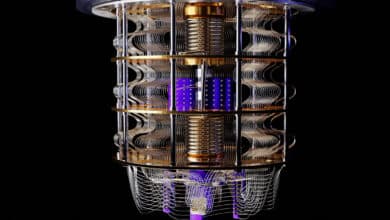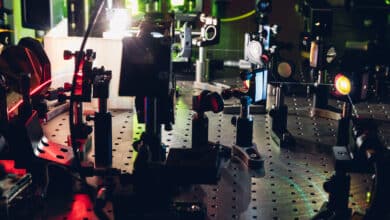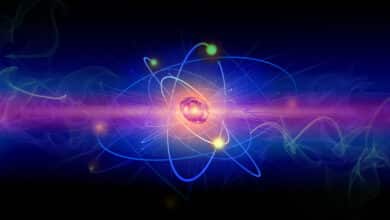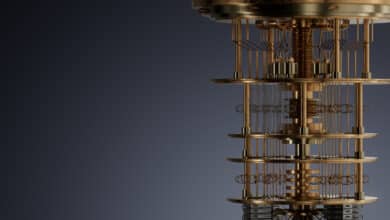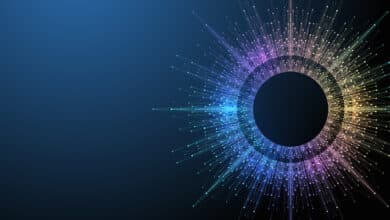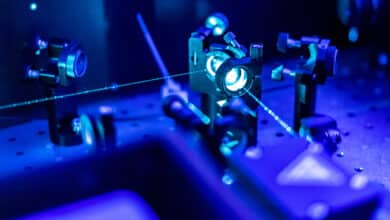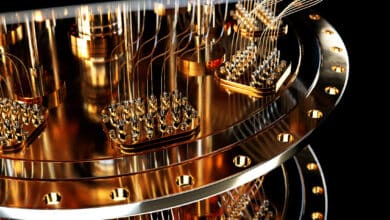All Quantum Computing Modalities Posts
-
Quantum Computing Modalities

Quantum Computing Modalities: Superconducting Cat Qubits
Superconducting cat qubits are an emerging approach to quantum computing that still uses superconducting circuits but encodes each qubit in a bosonic mode - typically a microwave resonator - as a Schrödinger “cat” state (a superposition of two coherent states). In essence, instead of a single Josephson junction acting as a two-level qubit (like a transmon or flux qubit), a cat qubit stores quantum information…
Read More » -
Quantum Computing Modalities
Taxonomy of Quantum Computing: Modalities & Architectures
Over the past few decades, researchers have devised multiple quantum computing paradigms – different models and physical implementations of quantum computers – each addressing these challenges in unique ways. In essence, there is no single “quantum computer” design; instead, there are many parallel approaches, each with its own principles, trade-offs, and technological hurdles.
Read More » -
Quantum Computing Modalities
Quantum Computing Modalities: Photonic Cluster-State
Photonic Cluster-State Computing is a form of quantum computing in which information is processed using photons (particles of light) that have been prepared in a highly entangled state known as a cluster state. It falls under the paradigm of measurement-based quantum computing (MBQC), often called the one-way quantum computer. In this scheme, a large entangled resource state (the photonic cluster state) is generated first, and…
Read More » -
Quantum Computing Modalities
Quantum Computing Modalities: Ion Trap and Neutral Atom MBQC
Ion Trap and Neutral Atom implementations of MBQC leverage two leading “matter-qubit” platforms – trapped ions and ultracold neutral atoms – to realize this model. In a trapped-ion MBQC, a string of ions (charged atoms) is confined and entangled via electromagnetic fields and laser pulses. The ions’ internal states serve as qubits that can be entangled pairwise or globally using multi-ion gate operations, preparing a…
Read More » -
Quantum Computing Modalities
Quantum Computing Modalities: Superconducting Qubits
Superconducting qubits are quantum bits formed by tiny superconducting electric circuits, typically based on the Josephson junction – a sandwich of two superconductors separated by a thin insulator which allows tunneling of Cooper pairs. When cooled to extremely low temperatures (≈10–20 millikelvin), these circuits exhibit quantized energy levels that can serve as the |0⟩ and |1⟩ states of a qubit.
Read More » -
Quantum Computing Modalities
Quantum Computing Modalities: Holonomic (Geometric Phase) QC
Holonomic quantum computing (also known as geometric quantum computing) is a paradigm that uses geometric phase effects to perform quantum logic operations. In a holonomic gate, the quantum state is manipulated by adiabatically (or sometimes non-adiabatically) moving the system’s parameters along a closed loop in parameter space, causing the state to acquire a geometric phase or holonomy.
Read More » -
Quantum Computing Modalities
Quantum Computing Modalities: Photonic QC
Photonic quantum computing uses particles of light – photons – as qubits. Typically, the qubit is encoded in some degree of freedom of a single photon, such as its polarization (horizontal = |0⟩, vertical = |1⟩), or its presence/absence in a given mode (occupation number basis: no photon = |0⟩, one photon = |1⟩ in a mode), or time-bin (photon arriving early vs late). Photons…
Read More » -
Quantum Computing Modalities
Quantum Computing Modalities: Trapped-Ion QC
Trapped-ion quantum computing uses individual ions (charged atoms) as qubits. Each ion’s internal quantum state (usually two hyperfine levels of the atom’s electron configuration) serves as |0⟩ and |1⟩. Ions are held in place (suspended in free space) using electromagnetic traps – typically a linear Paul trap that confines ions in a line using oscillating electric fields. By using lasers or microwaves to interact with…
Read More »
